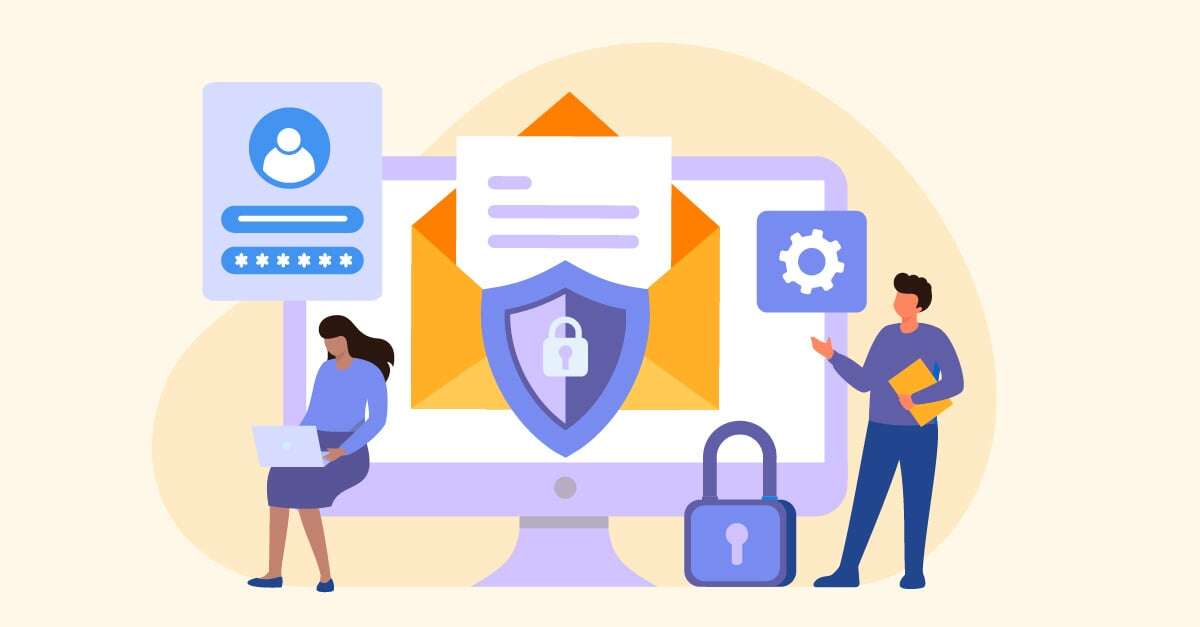Protecting your organization’s and customers’ data is an increasingly critical task – especially when it’s in the hands of a third-party vendor. Vendor data breaches and cyberattacks can create devastating consequences, including lack of customer trust, lost business, and time spent to restore services.
These are all consequences of vendor information security risk. Let’s explore what vendor information security risk is, the various types of it, and how your organization can manage it.
What Is Vendor Information Security Risk?
Vendor information security risk refers to the threats or vulnerabilities stemming from third-party vendors that have access to your organization's sensitive information, systems, or networks.
Vendor information security risk arises when a vendor has inadequate or ineffective security controls, encompassing both cyber and physical security risks. This type of risk is especially relevant if a vendor processes, transmits, accesses, or stores your organization’s sensitive data. Proper assessment and management of these risks are critical to safeguarding your organization’s information and systems.
Here’s examples of vendor information security risk:
- Cloud service providers – Cloud service providers store sensitive data, which exposes your organization to risk if the cloud provider’s security measures are inadequate. For example, a data breach could lead to unauthorized access to your organization’s confidential information.
- Software vendors – If third-party software contains vulnerabilities that aren’t patched or regularly updated, your organization is exposed to information security risk. For example, a software vendor’s unpatched vulnerability can allow hackers to gain access to your network.
- Outsourced IT services – An IT services vendor poses information security risk if they don’t follow the correct security protocols. For example, a failure to implement proper access controls could let unauthorized employees breach your systems.
- Payment processors – A payment processor creates both data security and financial risks. For example, if the payment processor is breached due to poor internal controls, your organization’s and customers’ payment information can be compromised.
Consequences of Vendor Information Security Risk
There are several consequences of unmanaged vendor information security risk. Understand the risks to better prepare and implement the right strategies.
- Data breaches – Unauthorized access to sensitive data held by your vendor. Nearly every type of data holds some value for cybercriminals, so it’s essential to protect it. A data breach can expose your employees’ or customers’ personal information, financial data, or intellectual property.
- Unauthorized access – Without proper access controls, vendor employees may access sensitive information without authorization. This leaves the potential for data theft, system compromise, or unauthorized data modification.
- Compliance issues – If a vendor doesn’t have stringent security practices, you may be found at fault for incidents and data breaches if you didn’t perform proper due diligence on the vendor. Laws and regulations require information security – the Gramm-Leach-Bliley Act for financial institutions in the U.S., the Health Insurance Portability and Accountability Act (HIPAA) in healthcare, and the General Data Protection Regulation (GDPR) in the EU, and many U.S. states also have privacy laws.
- Operational disruptions – Cybersecurity incidents and data breaches can affect the continuity and efficiency of business operations of your supply chain. Your organization may experience downtime, loss of time, and financial losses.
- Reputational damage – A vendor’s data breach or cyber incident can damage your organization’s reputation, losing customer trust and business and receiving negative publicity.
- Financial losses – The costs of remediating data breaches, paying regulatory fines, and handling lawsuits are expensive. Your organization may face a significant financial burden for poor vendor security practices.
How to Manage Vendor Information Security Risk
To protect your organization, managing vendor information security risk is critical. Here are a few tips to follow:
- Conduct due diligence – Before beginning the vendor relationship, evaluate security practices, policies, and controls. Consider whether the vendor practices data encryption and has policies for data retention, destruction, and privacy. Some key documents to review include:
-
- SOC reports
- Cybersecurity and information security policies
- Penetration and vulnerability testing results
- Evidence of regular security and social engineering testing
- Evidence of cyber insurance coverage
- Identify vendors with access – Maintain an updated list of vendors that have access to your information or systems. You can’t manage what you don’t know. Include the type of information vendors have access to, how they’re going to protect it, and whether the information will be shared with fourth parties.
- Establish strong contractual agreements – Set information security expectations in the vendor contract. This includes data breach notifications (generally a timeline of 24 to 72 hours after the vendor is aware of the breach), a right to audit security documentation, expectations on data protection practices, and insurance requirements.
- Utilize risk intelligence – Monitoring information security risk is challenging due to its evolving nature. Risk intelligence tools provide real-time data about current threats. Your organization can quickly act to remediate vendor issues.
- Get cyber risk insurance – Get cyber risk insurance to protect against vendor information security risk. Cyber risk insurance can offset the costs of a breach and provides a layer of risk mitigation. Work with your insurance carrier to determine the right type and amount.
Managing vendor information security risk protects your organization’s data, ensures compliance, and leaves your organization better positioned for success. Conduct thorough due diligence, establish strong contractual agreements, and use the right tools to monitor the risk.
What should you do if your vendor has poor cybersecurity practices? Download this infographic and learn four steps to take.



















.gif?width=1920&name=Sample-Graphic-Animation%20(1).gif)















